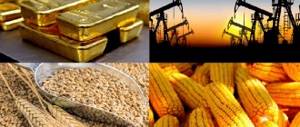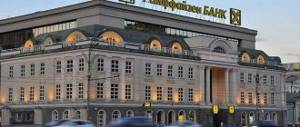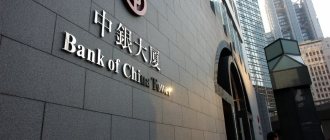Potential threat - synthetic diamonds (not yet)
Natural diamonds are used for 99% of jewelry. Synthetic, grown in laboratories - only 1%. There is an opinion among analysts that the use of synthetic diamonds could increase by up to 15%. And they are beginning to argue that the generation born since 1981 gets married less often and later, which means they buy fewer diamond rings. Plus, this generation is not ready to overpay for natural diamonds.
Here's an opinion not based on data: if buying jewelry were rational, synthetic diamonds would have driven down the price of natural diamonds long ago. It all depends on how companies sell the dream.
Here's the data. In May 2021, the Diamond Manufacturers Association surveyed Americans on whether they considered synthetic diamonds to be genuine: only 16% responded in the affirmative.
In 2021, diamond mining company De Beers launched the Ligthbox line of synthetic diamonds. Another company has launched a Grown with Love line. American analyst Paul Zimnicki compared the prices of natural diamonds with the prices of lab-grown diamonds and diamonds from the Lightbox and Grown with Love series - all synthetic diamonds cost less than natural ones. The production of synthetic diamonds itself has not yet affected the cost of natural diamonds.
Gray color shows the cost of a natural diamond, turquoise color – created in a laboratory, pink and red color – synthetic diamonds from the collections of different companies. So far, synthetic diamonds have not affected the cost of natural diamonds
Diamond trends
The advent of synthetic stones marked the beginning of a new era in the history of diamonds. They are cheaper than natural ones (20-40%), while their characteristics are not inferior to their natural counterparts.
The profit from synthetic diamonds is almost 2 times higher than from natural diamonds. Therefore, according to forecasts, their production will increase in the near future.
Another important trend is the change of generations, which has influenced the nature of consumer preferences. Young people (19+) mainly pay attention to new technologies and brand positioning. They are critical by nature and less attached to things.
Advantageous offers for clients
Our well-known organization provides the opportunity to profitably sell or buy various precious products that have all kinds of value. The price of diamonds on the exchange may vary depending on the existing jewelry, the volume of the gemstone, the weight of the product and many other key points. But despite this, as a rule, it suits every interested consumer. Our famous diamond exchange in Moscow offers a list of profitable offers for every interested person. Therefore, by contacting us, you can not only profitably sell or buy various jewelry with an expensive stone. But also receive a number of benefits that are provided to each interested person.
Opportunities for entering a trade
In the example described above, you should look for the moment to open a long position, since the trend becomes “bullish”. First of all, you should note the height of the model. It will be equal to the distance H - from the local minimum of the diamond figure to its highest point.
There is no need to rush to enter the market immediately after breaking through the upper right border of the model. Only when the price crosses height H can a buy order be opened. The nearest target can be marked upward at a distance H (the height of the figure). It is reasonable to set a safety stop loss at the level of the local minimum of the pattern.
The chart shows that the price, after crossing the line of the local maximum of the figure, tried to test it as a new support line and then gradually went up, reaching the target point. The “diamond” model demonstrates high precision. Price fluctuations within it are accompanied by large volumes of purchases and sales. Market activity has increased.
The world's main diamond exchanges and features of precious stones trading
The trade in polished diamonds is a rather specific matter, not only because of the high cost of the stones, but also because of some natural factors. Diamonds in the world are mined in many places - South Africa, Botswana, Zimbabwe, DRC, Russia, Canada, Australia, Brazil. But real precious gems are mined in very few cases; everything else is technical diamonds, suitable for making tools, inexpensive crafts and not of high value.
There are three main suppliers - De Beers, ALROSA and Rio Tinto. The three of them hold 70% of the total diamond market. The remaining 30% goes to other miners - Dominion Diamonds, Petra Diamonds and others.
De Beers has been and remains the trendsetter in prices and fashion for rough and polished diamonds. After the discovery of the Yakut diamond mines, Canadian and Australian deposits, their positions sank significantly. But the South African corporation remains a significant player in the diamond market; they hold the lead in the cost of mined stones, while ALROSA leads in quantity, but not in value.
The diamonds are then supplied to diamond exchanges around the world. There are 29 diamond exchanges in the world, but the main turnover occurs at the largest ones - in Antwerp, Ramat Gan, London, Toronto and Mumbai.
It is impossible to buy stones outside of these exchanges. There are many restrictions and certifications provided by the Kimberley Process. These measures are aimed at the smuggling of jewelry and so-called “blood diamonds” - stones that can be mined in warring territories. Money from such precious stones goes to finance military operations and support warlords, which is opposed by the world community.
Types of diamonds and their costs
Types of precious minerals vary in shades . The color differences between stones are due to the presence of certain impurities or their absence. Diamonds that are expensive are those that do not contain a large amount of impurities and, for this reason, have transparency and a whitish tint. Of course, such diamonds also contain a certain percentage of inclusions, but it is very small.
The rarest red and green diamonds containing chromium are quite expensive. For one carat of such luxury you need to pay about 250,000 dollars . Rare purple stones with inclusions of hydrogen, pink crystals with an admixture of manganese, as well as blue ones, including a mixture of aluminum and boron, are expensive.
The cheapest minerals are brown ones containing iron, which gives them their color. The yellow ones are a little more expensive than the brown ones and have lithium inclusions.
Potential for growth: number of mines is declining
According to Paul Zimnicki, there are 54 diamond mines in the world, which account for 99% of production. And if diamond prices do not rise, the number of mines will be reduced to 14 by 2040. In this scenario, production would drop by 60%. To prevent this from happening, diamond prices must double.
If prices for natural diamonds rise, mining at some of the mines will become profitable again. New diamond mines may emerge, but their development may take a decade.
Diamond mining companies have the following opinion: production will fall. There are no new large deposits.
According to the consulting company Bain & Company, diamond production will fall by 1-2% annually until 2030. Source: Mountain Province Diamonds Presentation, page 13
Alrosa took data from all companies and compiled a production forecast. The names of large diamond mines that are being depleted are shown in color. Source: Alrosa presentation for December 2021, page 9
Diamonds: review of price changes and investment attractiveness
Diamonds: review of price changes and investment attractiveness
In an unstable economic situation, it is not a bad idea to think not only about preserving your funds, but also about increasing them. In addition to the usual bank deposits and playing with exchange rates, many consider diamonds as an investment instrument. This article compares various factors, incl. deposit rates and the level of changes in prices for diamonds, and also assesses the possible investment attractiveness of diamonds based on the results of 2011.
At the beginning of each calendar year, the Rapaport information and analytical bulletin publishes data on changes in diamond prices for various periods of time (one, three, five, ten and twenty years), based on these data it is possible to conduct analytical studies, including assessing the investment attractiveness of diamonds .
In order to assess the investment attractiveness of diamonds, it is necessary to conduct a comparative analysis of the dynamics of changes in their value with other market indicators:
- Ruble inflation in Russia in 2011, according to the Federal State Statistics Service (Rosstat), was 6.1%, although many experts consider this figure to be somewhat underestimated. Rapaport's price list is published in dollars, so the question arises: how legitimate is it to compare the ruble inflation rate and price changes in dollars? For 2011, such a comparison can be considered legitimate, since the dollar exchange rate against the ruble changed by a close amount (6%).
- Interest rates on deposits in Moscow differ for time deposits and demand deposits, as well as for different currencies. Thus, for time deposits, the highest declared interest rates in 2011 were 12.5% in rubles, 9% in dollars and 9% in euros. For demand deposits, the same rates were 10.5% in rubles, 7.5% in dollars and 7% in euros. The difference between time deposits and demand deposits is profitability and liquidity. The former are characterized by less liquidity, but such investments bring greater income. When constructing the graphs, rates in dollars were taken into account, since Rapaport’s price list is published in this currency.
- The increase in the exchange value of gold in US dollars (according to the London Bullion Exchange) amounted to 15%: at the beginning of 2011, the cost of gold was $44.64 US per 1 gram, and at the beginning of 2012 – $51.38.
To assess the feasibility of investing in diamonds, it is necessary to establish a lower level of profitability—the price level at which the investment will be profitable. We believe that the lower level of profitability (the zero point of price analysis) can be objectively set as the inflation rate in 2011 or the inflation rate of the ruble against the US dollar, which averaged 6% in 2011. If a stone has risen in price by more than 6% during 2011, the investment is profitable. .
| 0.30-0.39 carats | 0.40-0.49 carats |
| 0.50-0.69 carats | 0.70-0.89 carats |
| 0.90-0.99 carats | 1.00-1.49 carats |
| 1.50-1.99 carats | 2.00-2.99 carats |
| 3.00-3.99 carats | 4.00-4.99 carats |
| 5.00-5.99 carats | 10.00-10.99 carats |
Different stones - different dynamics
For different size groups, the zones of maximum and minimum growth in the value of a diamond differ.
- For diamonds less than 0.50 carats (weight groups 0.30-0.49 carats ), the maximum increase in value was observed for stones of high clarity groups with low color, low clarity groups with high color, as well as stones of medium color and clarity groups. The maximum jump in value of 38% among stones of 0.30-0.49 carats was recorded for M/SI1 diamonds. It is interesting that among stones of 0.40-0.49 carats, the largest increase in value (33%) was demonstrated by stones of low quality characteristics M/I3. For stones of the entire range of characteristics weighing 0.30-0.49 carats, the average increase in value was 11%.
- For stones of a wide range of weights from 0.50 to 3.99 carats, at the end of the year, a similar picture of price dynamics is observed: a significant increase in the cost of almost all product categories, with the exception of stones of I2 and I3 clarity (which either did not change in price or the increase was minimal ).
Among stones of all quality characteristics within the same size, on average, stones weighing 3.00-3.99 carats showed the greatest increase in price: 17% (for the entire array of stones) and 19% (for all stones except I2-I3). However, stones of other sizes lagged behind the 3-carat stones a little: their prices increased by 14-16% and 16-19%, respectively.
For each size of the considered range, we can consider the maximum cost increases:
| 0.50-0.69 carats: 33% (J/VS1) | 1.00-1.49 carats: 25% (K/VS2) |
| 0.70-0.89 carats: 27% (M/VVS1) | 1.50-1.99 carats: 24% (G/IF) |
| 0.70-0.89 carats: 27% (M/VVS1) | 2.00-2.99 carats: 25% (G/IF) |
| 0.90-0.99 carats: 27% (M/VVS1, L/VS1) | 3.00-3.99 carats: 30% (L/I3) |
- Diamonds of 4.00 carats and above have risen in price significantly less compared to other sizes. Unlike all other weight groups, for 4-carat stones the maximum increase was observed for stones of low purity groups (SI3-I2).
The exception was D/IF stones: the cost of which increased by 20% for stones weighing 4.00-4.99 carats and by 14% for stones over 10%.
On average, stones weighing 4.00-5.99 carats increased in price by 6%, and 10-carat stones - by only 4%. Among 10-carat stones, only a few were able to overcome the return on investment bar (the largest increase was 14% for stones of the highest characteristics (D/IF).
The maximum growth rates recorded for large stones were 21% for stones 4.00-4.99 carats (L/I1), 22% for stones 5.00-5.99 carats (K/I1), 14% for 10.00-10.99 carats (D/IF).
The attractiveness of investing in diamonds
| Percentage increase in the cost of diamonds in 2011 |
Throughout 2011, prices for diamonds changed very heterogeneously.
From January to August 2011, there was a significant increase in diamond prices. In August, the market reacted to the second wave of the economic crisis, as a result of which prices began to gradually decline. However, these declines were overall smaller than the amount by which these prices rose at the beginning of the year. Therefore, you can see a whole range of stones, the cost of which has increased at the end of the year and increased significantly. These categories of stones are visible in the graphs, the increase in their value has exceeded the level of return on investment. Among the stones that have not lost their value, the following can be especially noted:
| 0.30-0.69 carats: high purity groups with low color groups (JM / IF-VS2) |
| 0.70-0.99ct: DM/IF-SI2 |
| 1.00-2.99 carats: FK/IF-SI2 |
| 3.00-3.99 carats: DI/IF-VS2 |
| 4.00-4.99 carats: D/IF, DM / SI3-I1 |
| 5.00-5.99 carats: DL/I1 |
| 10.00-10.99 carats: D/IF |
Over the past two months of this year, a slight decline in prices for diamonds continues. Therefore, it is possible that the time may soon come for a profitable purchase of diamonds at discounted prices as an investment instrument.
This material is based on Rapaport statistics for 1 year. However, the same statistics can be done for longer periods of time.
As a general trend, it is worth noting that 4- and 5-carat diamonds are currently not growing in price. But this is probably explained not by decreased demand, but by the fact that in previous years these categories of stones have risen significantly in price.
Since there are many sellers and many buyers in the market, prices for diamonds (like other goods) reflect the balance of supply and demand. And if prices rise, it means that there is demand for diamonds. Rapaport publishes a statistical analysis based on retail cash asking prices in New York City. However, it is not only the ratio of supply and demand that determines the final cost of a product.
Another important factor is that more than 90% of a diamond's value is determined by the cost of the rough diamond. And there is an artificial factor in setting prices for raw materials: raw materials mining companies can regulate diamond prices themselves. Therefore, today's diamond prices largely reflect rough diamond prices set several months ago.
In addition, it is worth considering that Rapaport’s price list is based on three parameters from the usual 4Cs: weight, color and purity. The cut of the diamond is not taken into account here, but it also affects the value of the stones and can either increase or decrease the value of the stone.
Thus, the Rapaport price list is an indicator of diamond prices, and not a mandatory value for transactions. And most transactions on the market take place with various discounts from this price list.
Olga Yakovleva, Alexey Smirnov, Yuri Shelementyev Gemological Center of Moscow State University
Company finance
The image below shows public companies whose main activity is diamond mining.
I did not include De Beers and Rio Tinto in the list. De Beers is owned by the American mining company Anglo American - diamond production accounts for 23% of total revenue. At Rio Tinto, diamond production accounts for 2% of the company's revenue.
EBITDA is pre-tax earnings less interest and depreciation. Shows how much the company would earn in an ideal world, where there is no state, creditors and equipment wear and tear. If a company has negative EBITDA over the long term, it could potentially go bankrupt.
EBITDA margin is how much pre-tax profit the company has from revenue. Shows how much the company controls production costs, employee salaries and office rent. More is better.
How to make money trading gems
Precious stones remain an attractive investment opportunity. Anyone who wants to invest in diamonds can take three routes:
- buy a certified stone;
- buy diamond jewelry;
- will invest in securities tied to the value of precious stones.
Buying a certified stone is not always easy. The global trade in rough and polished diamonds is a rather closed area. It is simply impossible to get to many diamond exchanges without an invitation from an accredited participant. Russia has a certification system, without which the purchase of diamonds will be considered illegal.
Both stones and products with them must be purchased as close to the manufacturer as possible - at a cutting factory, at an electronic auction. This will significantly reduce the investment. Purchasing in a retail network will not always be economically profitable.
Securities whose price is based on the value of precious stones are traded on stock exchanges. These can be futures and options. Securities are more attractive for speculative transactions than for investment. There are no such securities on the Moscow Exchange yet, although ALROSA and the management of the exchange have been negotiating the issue and circulation of deliverable and non-deliverable diamond futures. But this project has not yet been implemented.
Industry structure
The structure of the diamond industry consists of three main processes:
- Production
- Processing and cutting
- Trade
Five companies account for about 70% of global diamond production: ALROSA, De Beers, Rio Tinto, Dominion Diamond, Petra Diamonds. The rest of the segment is the “black market”. African countries remain the leaders in illegal trade.
Extraction (Upstream)
Recently, diamond production volumes have shown negative dynamics. This was largely influenced by the lack of new deposits, as well as the coronavirus epidemic, which led to transport restrictions.
According to the Kimberley Process, global diamond production in 2019 amounted to 141.3 million carats, down 4.8% in volume and 9.7% in price.
A drop in production volumes has been observed since 2021 (then these figures were 150.9 million carats).
Processing and cutting (Midstream)
The main diamond processing plants are located in low-wage countries (75% of exports go to India).
The key feature of Midstream is seasonality. At the beginning of the year, cutters are busy building up raw material reserves. The higher the New Year and Christmas sales, the stronger the further demand for diamonds.
Trade (Downstream)
The largest markets for the diamond industry are in the USA and China. They account for more than 60% of global consumption. Therefore, all demand forecasts for diamond products depend on the GDP growth rates of these two countries.
In 2021, analysts predict a decline in GDP for the United States and China from 1.7 to 1.5% and from 5.2 to 4.8%, respectively.
We estimate the value of the business
By buying a share, you acquire a stake in the business and the opportunity to receive dividends. Investors use multipliers - financial indicators that can be used to assess the value of a company and its efficiency. Data is taken from financial statements. Multipliers allow you to compare companies from different countries and of different sizes.
EV, or enterprise value, is the value of a company taking into account debt. Formula: market capitalization + amount of loans - cash. Conditionally: you buy shares of a company along with debt.
EBITDA is a company's ideal profit, which does not take into account taxes and expenses not related to core activities. Formula: operating profit + depreciation. Based on EBITDA, you can compare companies from different countries.
EBIT is the company's operating profit. Operating profit shows how much money a company makes from its core business, diamond mining. Data is taken from companies' financial statements.
FCF, or Free Cash Flow, is free cash flow. Real money that remains with the company after mandatory investments in the business.
Net debt is the company's interest obligations (loans, leasing, rent) minus cash.
EBITDA, net debt and free cash flow are taken from company press releases or calculated independently. EBIT, or operating profit, is taken from financial statements.
Examples of calculating the cost of one carat diamonds
By combining different characteristics of a gemstone, you can roughly calculate its value. Thus, a one-carat round diamond, rated as absolutely colorless (color category 1(D)) and having the highest clarity 1(IF), costs approximately 2 million rubles . However, if you purchase exactly the same diamond of color category 4 (G), purchasing a crystal that is almost no different in appearance from the previous version will cost about 1 million rubles .
One carat of an oval-cut diamond with color 1(D) and clarity 1(IF) costs much less than a round crystal - about 1.5 million rubles . Cushion, princess, marquise, radiant and pear cut stones of the same quality have approximately the same price.
The cheapest options are champagne-colored minerals (6(I), 6.1 (J), 7(K)). One carat of such stones of any cut, except round, which is more expensive, costs from 400,000 to 550,000 rubles with a clarity of 1(IF). If such a diamond is of medium purity, then its price will be only 250,000 rubles .










